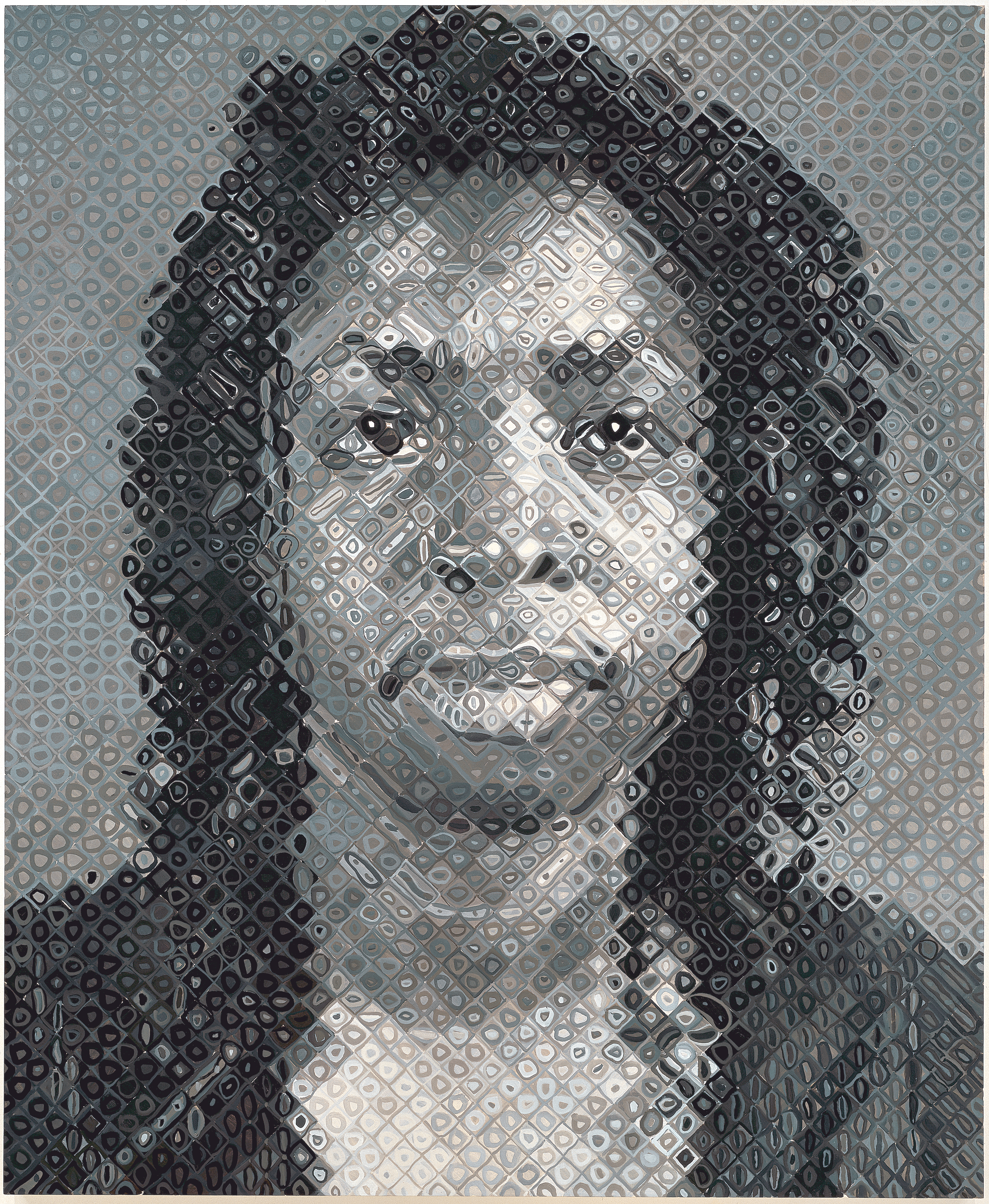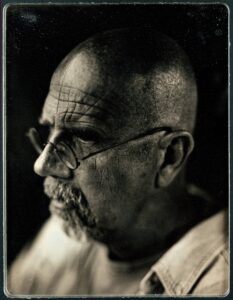NARRATOR:
A face, staring straight forward, isolated and centered, more a driver’s license or passport photo than a traditional painted portrait. Chuck Close has made a career of creating these portraits of himself, his friends, family members, and fellow artists like Agnes Martin, Roy Lichtenstein, Philip Glass.
CHUCK CLOSE:
Painting was dead. I’ve been around long enough to have painting be dead three or four times. And a period when painting is dead is absolutely the best time to paint, because it’s not the preferred sensibility, it’s not dictated what painting should look like; nobody cares anyhow.
And I remember the reigning art critic at the time, Clement Greenberg, famously said, “There’s only one thing that can’t be done in art today, and that’s paint a portrait.” And I thought: Hm. That’s pretty interesting. That must mean that I’m gonna have a lot of elbow room, and not a whole lotta competition. (laughs) Which gave me the opportunity to pick and choose from the conventions and traditions of portraiture, which had no urgency or importance for anybody in particular and sorta position myself in a way that I would make a truly modern portrait.
NARRATOR:
His signature technique is to divide a photograph into tiny segments on a grid. Sometimes we see a face, sometimes a confetti of abstract forms.
CLOSE:
Using a grid to blow something up goes back, you know, at least to the Egyptians.
NARRATOR:
Chuck Close.
CLOSE:
I’m often overwhelmed by the whole. And I found that if I break things down into small bite sized pieces, this big overwhelming problem becomes much more solvable. You solve this little piece, and then that little piece. And if you hang in there, you will get somewhere.
 Chuck CloseSelf Portraits / Scribble / Etching Portfolio2001
Chuck CloseSelf Portraits / Scribble / Etching Portfolio2001 Chuck CloseSelf-Portrait (Yellow Raincoat)2013
Chuck CloseSelf-Portrait (Yellow Raincoat)2013 Chuck CloseCindy (Smile)2013
Chuck CloseCindy (Smile)2013 Chuck CloseLorna2006
Chuck CloseLorna2006 Chuck CloseSelf-Portrait2006
Chuck CloseSelf-Portrait2006 Chuck CloseGwynne1982
Chuck CloseGwynne1982 Chuck CloseJames2002
Chuck CloseJames2002 Chuck CloseSelf-Portrait1999
Chuck CloseSelf-Portrait1999 Chuck CloseRoy I1994
Chuck CloseRoy I1994 Chuck CloseArne1980
Chuck CloseArne1980 Chuck CloseAgnes1998
Chuck CloseAgnes1998 Chuck CloseJohn1998
Chuck CloseJohn1998 Chuck CloseLorna1995
Chuck CloseLorna1995 Chuck ClosePhyllis1981
Chuck ClosePhyllis1981 Chuck CloseMarta/Fingerprint1986
Chuck CloseMarta/Fingerprint1986 Chuck CloseSelf-Portrait1999
Chuck CloseSelf-Portrait1999 Chuck CloseSelf Portraits / Scribble / Etching Portfolio2001
Chuck CloseSelf Portraits / Scribble / Etching Portfolio2001